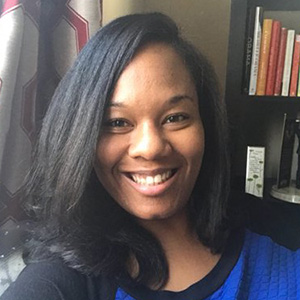
In my previous post, I gave an overview of two strategies you can use to inform yourself about the theoretical aspect of engagement with culture, diversity, and equity in evaluation. I now present two practical strategies, which I believe should follow the theoretical strategies presented in my previous post.
Strategy three: Engage with related sensitive topics informally
To begin to feel comfortable with these topics, engage with these issues during interactions with your evaluation team members, clients, or other stakeholders. Evaluators should acknowledge differing stakeholder opinions, while also attempting to assist stakeholders in surfacing their own values, prejudices, and subjectivities (Greene, Boyce, & Ahn, 2011).
To do this, bring up issues of race, power, inequity, diversity, and culture for dialogue in meetings, emails, and conversations (Boyce, 2017). Call out and discuss micro-aggressions (Sue, 2010) and practice acts of micro-validation (Packard, Gagnon, LaBelle, Jeffers, & Lynn, 2011). For example, when meeting with clients, you might ask them to discuss how they plan to ensure not just diversity but inclusivity within their program. You also can ask them to chart out program goals through a logic model but also ask them to consider if they think underrepresented participants might experience the program differently than their majority participants. Ask clients if they have considered cultural sensitivity training for program managers and/or participants.
Strategy four: Attend to issues of culture, equity, and diversity formally
Numerous scholars have addressed the implications of cultural responsiveness in practice (Frierson, Hood, Hughes, & Thomas, 2010; Hood, Hopson, & Kirkhart, 2015), with some encouraging contemplation surrounding threats to, as well as evidence for, multicultural validity by examining relational, consequential, theoretical, experiential, and methodological justificatory perspectives (Kirkhart, 2005, 2010). I believe the ultimate goal is to be able to attend to culture and context in all formal aspects of the research and evaluation. It is especially important to take a strengths-based, anti-defect approach (Chun & Evans, 2009) and focus on research intersectionality (Collins, 2000).
To do this, you can begin with the framing of the program goals. My programs aim to give underrepresented minorities in STEM skills to survive in the field. This perspective assumes that something is inherently wrong with these students. Instead, think about rewording evaluation questions to examine the culture of the department or program, to explore why more underrepresented groups (at least to have parity with the percentage in population) don’t thrive. Further, evaluators can attempt to include these topics in evaluation questions, develop culturally commensurate data instruments, and be sensitive to these issues during data collection, analysis, and reporting. Challenge yourself to think about this attendance as more than the inclusion of symbolic and politically correct buzzwords (Boyce & Chouinard, 2017), but as a true infusion of these aspects into your practice. For example, I always include an evaluation question about diversity, equity, and culture in my evaluation plans.
These two blog posts are really just the tip of the iceberg. I hope you find these strategies useful as you begin to engage with culture, equity, and diversity in your work. As I previously noted, I have included citations throughout so that you can read more about these important concepts. In a recently published article, my colleague Jill Anne Chouinard and I discuss how we trained evaluators to work through these strategies in a Culturally Responsive Approaches to Research and Evaluation course (Boyce & Chouinard, 2017).

Except where noted, all content on this website is licensed under a Creative Commons Attribution-NonCommercial-ShareAlike 4.0 International License.





 EvaluATE is supported by the National Science Foundation under grant numbers 0802245, 1204683, 1600992, and 1841783. Any opinions, findings, and conclusions or recommendations expressed on this site are those of the authors and do not necessarily reflect the views of the National Science Foundation.
EvaluATE is supported by the National Science Foundation under grant numbers 0802245, 1204683, 1600992, and 1841783. Any opinions, findings, and conclusions or recommendations expressed on this site are those of the authors and do not necessarily reflect the views of the National Science Foundation.